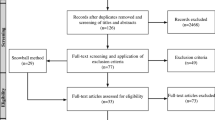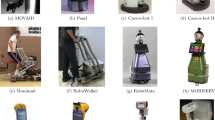Abstract
The aim of this paper is to point out the benefits that can be derived from research advances while implementing concepts such as ambient intelligence and ubiquitous/pervasive computing for promoting universal access in the information society, that is, for contributing to enable everybody, especially people with physical disabilities, to have easy access to all computing resources and information services that the upcoming worldwide information society will soon make available to the general public as well as to expert users. Following definitions of basic concepts relating to multimodal interaction, the significant contribution of multimodality to develo** universal access is briefly discussed. Then, a short state of the art in ambient intelligence research is presented, including references to some major research projects either in progress or recently completed. The last section is devoted to bringing out the potential contribution of advances in ambient intelligence research and technology to the improvement of computer access for physically disabled people, hence, to the implementation of universal access. This claim is mainly supported by the following observations: (1) most projects are aiming at implementing ambient intelligence focus research efforts on the design of new interaction modalities and flexible/adaptive multimodal user interfaces; outcomes of these projects may contribute to improving computer access for users with physical disabilities; (2) such projects target applications meant to support users in a wide range of daily activities which will have to be performed simultaneously with the related supporting computing tasks; therefore, users will be placed in situational contexts where they will be confronted with similar difficulties to those encountered by physically disabled users, since they will have to share out their perceptual and motor capabilities between one or several daily activities and the computing tasks meant to support them; (3) ambient intelligence applications being intended for the general public, a wide range of interaction devices supporting a great variety of input and output modalities will be available, making it possible to provide physically disabled users with appropriate human–computer interaction means tailored to their individual needs at a reasonable expense.
Similar content being viewed by others
Notes
This class results from grou** the “alternate” and “exclusive” multimodality classes in Coutaz, and Caelen, [8].
Speech SDK is a software toolkit developed by Philips for implementing speech command recognition and natural dialogue functionalities.
It started in 1997 and seems to have been active until 2001.
Authors consider three classes of computer activities: information, communication and creation tasks.
References
AMI—Augmented multi-party interaction (2004): http://www.hmi.ewi.utwente.nl/Projects/ami.html
Bernsen N-O (1994) Foundations of multimodal representations, a taxonomy of representational modalities. Interact Comput 6:347–371
Bosseler A, Massaro DW (2003) Development and evaluation of a computer-animated tutor for vocabulary and language learning for children with autism. J Autism Dev Disord 33:653–672
Calvary G, Coutaz J, Thévenin D (2001) A unifying reference framework for the development of plastic user interfaces. In: Reed Little M, Nigay L (eds), Proceedings IFIP TC13.2-WG2.7 working conference EHCI’01, Toronto, Springer, Berlin Heidelberg New York, LNCS 2254, pp
Carbonell N (1999) Multimodality: a primary requisite for achieving an information society for all. In: Bullinger H-J, Ziegler J (eds), Proceedings of HCI international’99, Munich, August 22–26 1999, Mahwah (NJ), Lawrence Erlbaum Associates, London 2:898–902
CHIL—Computers in the human interaction loop (2004): http://www.chil.server.de/servlet/is/101/
Cohen PR, Johnston M, McGee D, Oviatt SL, Clow J, Smith I (1998) The efficiency of multimodal interaction: a case study. In: Mannell RH, Robert-Ribes J (eds), Proceedings of 5th international conference on spoken language processing (ICSLP’98), Sidney, Australia, 30 November–4 December, 1998, ASSTA, Sidney 2:249–252
Coutaz J, Caelen J (1991) A taxonomy for multimedia and multimodal user interfaces. In: Proceedings of the 1st ERCIM workshop on multimodal HCI, INESC, Lisbon pp 143–148
Dey AK, Salber D, Abowd GD (2001) A conceptual framework and a toolkit for supporting the rapid prototy** of context-aware applications. Anchor article for special issue on context awareness. Hum Comput Interact 16(2–4):97–166
Diederiks E, van de Sluis R, van de Ven R (2003) Sociability and mobility concepts for the connected home. In: Carbonell N, Stephanidis C (eds) Universal access—theoretical perspectives, practice and experience. Springer, Berlin Heidelberg New York, LNCS 2615 pp 442–457
Dutoit T (1996) An introduction to text-to-speech synthesis. Kluwer, Dordrecht pp 326
Infineon web site: Clothing with a high IQ http://www.infineon.com/cgi/ecrm.dll/jsp/showfrontend.do?lang=EN&channel_oid=-10551
Jameson A (2003) Adaptive interfaces and agents. In: Jacko J, Sears A (eds) Human-computer interaction handbook. Erlbaum Associates, Mahwah pp 305–330
Johnston M (1998) Unification-based multimodal parsing. In: Proceedings of the 27th international conference on computational linguistics and the 36th annual meeting of the association for computational linguistics (COLING’98), Montreal, Canada, August 10–14, 1998, Morgan Kaufmann Publishers, Orlando pp 624–630
Maybury MT (ed) (1993) Intelligent multimedia interfaces. AAAI/MIT Press, Memlo Park
Maybury MT (2001) Universal multimedia information access. In: Proceedings UAHCI’01 (HCI International 2001), New Orleans, August 8–10, Lawrence Erlbaum, Mahwah pp 382–386
Microsoft web site: Easy living. http://www.research.microsoft.com/easyliving/
MIT Project oxygen—pervasive human-centered computing (2004): http://www.oxygen.lcs.mit.edu/
Nigay, L, Coutaz J (1993) A design space for multimodal systems: concurrent processing and data fusion. In: Ashlund S, Mullet K, Henderson A, Hollnagel E, White T (eds) Proceedings of joint international conference on human factors in computing systems (CHI’93 & INTERACT’93): INTERCHI’93, Amsterdam, April 24–29, 1993, ACM Press, New York pp 172–178
Oviatt SL (2000) Multimodal system processing in mobile environments. In: Proceedings of 13th annual ACM symposium on user interface software and technology (UIST’2000), San Diego, CA, November 5–8, 2000. ACM Press, New York pp 21–30
Ozone—New technologies and services for emerging nomadic societies—public documents (2004): http://www.extra.research.philips.com/euprojects/ozone/public_public_documents.htm#TOP
Ruttkay ZS, Dormann C, Noot H (2002) Evaluating ECAs what and how? Proceedings of AAMAS’02 workshop on ‘embodied conversational agents—let’s specify and evaluate them!’, Bologna, Italy, July 2002, http://www.home.cs.utwente.nl/∼zsofi/publist.html
Schmidt A, Strohbach M, van Laerhoven K, Gellersen WK (2003) Ubiquitous interaction—using surfaces in everyday environments as pointing devices. In: Carbonell N, Stephanidis C (eds) Universal access, theoretical perspectives, practice, and experience, pp 263–279
Shafer SA, Brumitt B, Cadiz JJ (2001) Interaction issues in context-aware intelligent environments. Hum Comput Interact 16:363–378
Smailagic A, Siewiorek D, Anhalt J, Gemperle F, Salber D, Weber S (2001) Towards context aware computing: experiences and lessons. IEEE Intell Syst 16(3):38–46
Starner T (1999) Wearable computing and contextual awareness. PhD thesis, Massachusetts institute of technology
Stephanidis C (2001) Adaptive techniques for universal access. User Model User Adapt Interact 11(1/2):159–179
Want R, Farkas KI, Narayanaswami C (2005) Guest editors’ introduction: energy harvesting and conservation. IEEE Pervas Comput 4(1):14–17
Ware C (ed) (2004) Information visualization. Perception for design. North Holland Elsevier Science, Oxford
Weiser M (1996) Ubiquitous computing: http://www.ubiq.com/hypertext/weiser/UbiHome.html
Author information
Authors and Affiliations
Corresponding author
Rights and permissions
About this article
Cite this article
Carbonell, N. Ambient multimodality: towards advancing computer accessibility and assisted living. Univ Access Inf Soc 5, 96–104 (2006). https://doi.org/10.1007/s10209-006-0027-y
Published:
Issue Date:
DOI: https://doi.org/10.1007/s10209-006-0027-y




